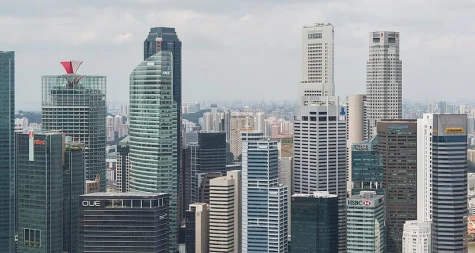
Tep Sareth, 55, from Prey Veng province transports a tourist in Phnom Penh. (Photo: Ouch Sony)
Cambodia’s Prime Minister Hun Sen launched a foundation on Saturday (Jan 13) to preserve the country’s remaining iconic cyclos.
Speaking at a ceremony attended by more than 300 cyclo drivers at Koh Pich in Phnom Penh, Mr Hun Sen announced a number of benefits for those still working in the struggling rickshaw industry.
Cyclo drivers who register under the foundation will gain several benefits, including free medical treatment at public hospitals and a subsidy of US$52.50 to cover vehicle rental fees and meals each month.
Each driver will also be eligible for two new sets of clothing every year, the prime minister said.
“(I) hope that our cyclo drivers’ livelihoods will be better than before,” he said.
Along with donations from other donors, Hun Sen also personally contributed 500 million riel (US$125,000) to the foundation and promised to add a further US$20,000 every month.
Based on the funds in hand, the programme is set to run for two years. However, the prime minister said he wanted to make this foundation permanent to ensure the trade survives into the future.
“We have enough funds to run this from today onwards,” Hun Sen said. “In the near future, we also have to think about the good preservation of our cyclos. We have to preserve our cyclos.”
Cyclo was a popular mode of transportation among Cambodians. But today the three-wheeled rickshaw is struggling to survive as cars and motorcycles have overtaken them on the streets.
In the capital Phnom Penh, the iconic cyclos have become a rarity. Most of them exist solely for tourists who, unlike most local commuters, enjoy the city sightseeing at a slower pace and in a more traditional way.
Cyclo driver Proeung Ros, 67, a member of the Cambodia Cyclo Association, driving in Phnom Penh. (Photo: Ouch Sony)
Their popularity has been in sharp decline since the early 2000s, with many cyclo drivers seeing their income dwindle by more than half.
“Fewer commuters rely on cyclos nowadays. I can barely make ends meet,” said El Nget, one of some 250 cyclo drivers in Cambodia who still pedal for money. In his heyday, the 61-year-old used to earn US$15 a day. Now, the most he can get is US$5.
Like other cyclo drivers, Nget’s customers are tourists. In fact, they are the main reason these vehicles can still find their place in the congested capital.
Records kept by the Cyclo Conservation and Careers Association (CCCA) show about 1,500 cyclos were roaming the streets of Phnom Penh in 1999. Today, there are only a couple of hundred left.
“Only tourists can keep them alive,” said CCCA executive director Im Sambath. “We don’t expect their numbers to go up in the future.”
The number of cyclos on Cambodian streets has dwindled in recent years. (Photo: Ouch Sony)
Tourists contribute about 70 per cent of Cambodian cyclo drivers’ incomes, while the rest comes from local commuters, according to Sambath.
These rickshaws were first introduced in Cambodia in 1963. Today, most of them are used to take foreign visitors to popular tourist attractions in the capital such as the Royal Palace, the Independence Monument and the National Museum.
“These days, we rely mostly on tourists. If there are no tourists, cyclos will be finished,” said Long Sokhuoy, who established the Cambodia Cyclo Association in Phnom Penh in 2014 to preserve their existence and increase their drivers’ income through tourism. “Cyclo may be slow but it gives tourists a chance to enjoy the city.”
In her first visit to Cambodia, tourist Rashima Bhatia from London said the Cambodian cyclos reminded her a lot of her ancestral home India, where she used to take a similar vehicle to go to school.
And since both of her sons were born in London, Bhatia said she wants them to experience the traditional means of transportation when they have a chance.
“It`s something which my children have not seen. So I want them to experience how it is,” she said.
“It is dying out. And the new generations do not want to work so hard; that is the problem.”
After having his first ride on a cyclo in Cambodia, her 19-year-old son Varaul Bhatia said he hopes tourism would be able to keep these iconic vehicles alive.
Cyclos are almost exclusively used by tourists, not locals. (Photo: Ouch Sony)
“It’s an interesting form of transportation,” he said. “You don’t get it in a lot of western countries. But I think having it is a very nice thing.
“If you are in a rush, I don’t recommend it. But if you’ve got time, I think it is a great way to see the city. You see everything and you can hear the sound. You get the full experience of being in the city. I don’t think you can get that in a car or on a bike.”
While many cyclo drivers continue to quit their career, Nget does not plan to stop pedaling anytime soon.
“I will drive it until I cannot do it because if I just stay at home, I’ll have nothing to eat and no money to spend,” he said.
Source: CNA/am





























